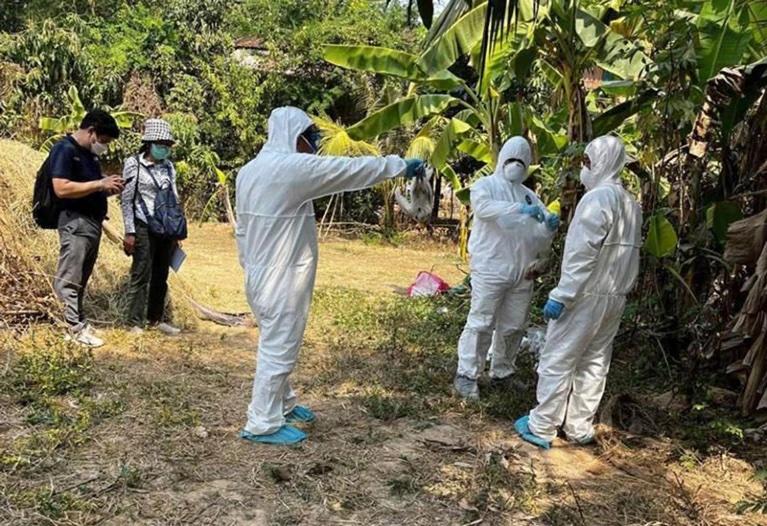Cambodian health officials reported a possible human-to-human transmission of avian influenza A (H5N1) between a father and daughter in the Prey Veng province of Cambodia Feb. 24. The 11-year-old girl passed away due to her infection, but the World Health Organization (WHO) reports that others in contact with the family have since tested negative.
While hundreds of human cases of avian influenza have been reported in the last few decades, they have typically been the result of contact with infected birds. Though rare, human infections often result in severe cases that have a notably high mortality rate. Since 2003, a total of 873 human cases of avian influenza have been reported across 21 countries, with a death rate of 52.5%.

The events in Cambodia have led scientists to question whether the daughter infected her father, sparking worries about the potential of a new strain enabling human-to-human transmission that could lead to the development of a new, much more deadly pandemic.
In light of the infections in Cambodia, the WHO said they are currently working on assessing the risk of the virus and preparing for a coordinated response, according to a Feb. 26 press release.
“A joint animal-human health investigation is underway in the province of the index case to identify the source and mode of transmission,” the WHO wrote in the statement. “Additionally, a high-level government response is underway to contain any further spread of the virus.”
Shweta Bansal, a Georgetown biology professor specializing in disease ecology and modeling, said the public health response has been strong, and that she does not believe there is an imminent threat to public health.
“While we do not have a stockpiled vaccine against this particular H5N1, the US has a rapid response plan to produce an H5N1 human vaccine if it is needed,” Bansal wrote to The Hoya. “Recent data has also shown that the circulating virus has not gained resistance to oseltamivir, which is an effective antiviral against influenza.”
Avian influenza, which is typically spread from aquatic birds to other terrestrial and commercial birds through secretions such as saliva and feces, has been causing significant problems in the global bird population in recent months.
Georgetown ecology professor Alexandra DeCandia said the new strain of H5N1 has resulted in outbreaks across the world that have been decreasing wild and commercial bird populations.
“In addition to putting wild birds at risk, avian flu has serious implications for our food supply (as seen in the price of eggs recently),” DeCandia wrote to The Hoya.
Prior to the human infections in Cambodia, scientists saw a transmission event on a Spanish mink farm in October 2022 as one of the first large outbreaks of H5N1 driven by mammal-to-mammal transmission. After performing genetic testing on the virus that infected the minks, scientists found that a genetic mutation in the virus allowed it to replicate more efficiently in mammals.
DeCandia worries that this spillover between birds and mammals points to the presence of mutations in the virus that enable it to more easily infect a new host.
“The new host doesn’t have any experience with this particular virus, and is therefore less adept at fighting it off,” DeCandia wrote. “This can lead to really rapid spread of the virus through the new host population, and may even facilitate further spillover to other hosts.”
Bansal said the confirmed mammal-to-mammal transmission of the virus increases the potential of the virus’ ability to adapt and become transmissible among humans, leading to it being classified as a highly pathogenic avian influenza (HPAI).
“The recent outbreaks of HPAI H5N1 among animals is cause for concern as the world is still in the midst of the devastating costs to human health and crumbling healthcare infrastructure due to the COVID-19 pandemic,” Bansal wrote. “The genetic diversity and geographical distribution of HPAI H5N1 viruses suggests that more spillover events in mammals are possible which poses great risks for food security, wildlife conservation and human health.”
This news is an opportunity for U.S. and global health systems to take a more proactive approach to preventing the future development of severe pandemics like the COVID-19 pandemic, Bansal said.
“In the short and long-term, we need to invest in intensive and sustained disease surveillance of wildlife, as well as people who tend to come into close contact with animals, especially those who work in the poultry and swine industry,” Bansal said.








